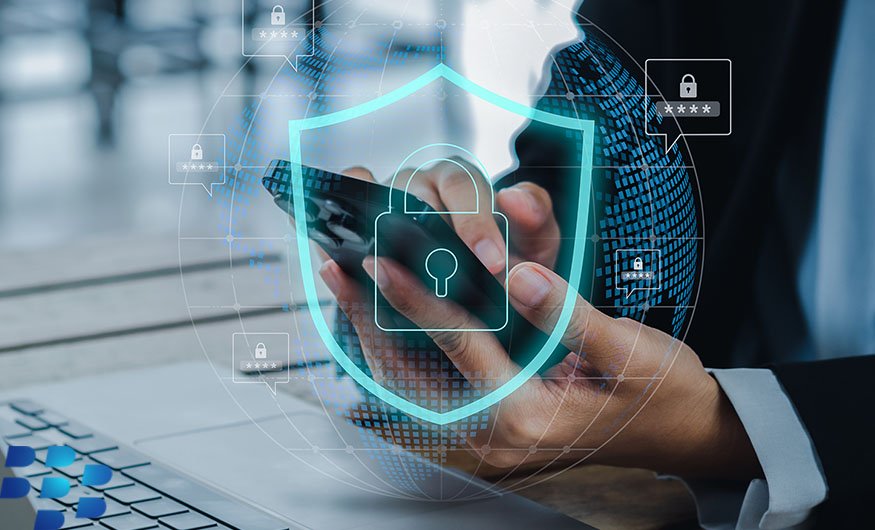With the rise of digital communication, securing your communication channels has never been more critical. Whether you’re sending sensitive work emails, chatting with friends, or making business calls, it’s essential to protect your personal and professional data from potential cyber threats. In this guide, we’ll explore practical steps to safeguard your communication channels and ensure your information remains private.
1. Use End-to-End Encryption
End-to-end encryption (E2EE) is one of the most reliable methods for securing your communication channels. It ensures that only the sender and recipient can read the messages, preventing third parties, including service providers, from accessing the content. Popular apps like WhatsApp, Signal, and iMessage offer E2EE, but it’s essential to verify that this feature is activated.
When choosing a communication platform, always opt for one that provides strong encryption by default. This step is particularly important for business communications where sensitive data, like financial reports or customer information, is exchanged.

2. Enable Two-Factor Authentication (2FA)
Two-factor authentication (2FA) adds an extra layer of security to your accounts. Even if your password is compromised, 2FA requires a second form of verification—typically a code sent to your phone or email—before granting access. This added step significantly reduces the risk of unauthorized access.
To enhance security across all communication platforms, make sure to enable 2FA wherever it’s available, including for your email, messaging apps, and social media accounts. It’s a simple but powerful way to secure your communication channels.
3. Use Secure Wi-Fi Connections
When sending messages, making calls, or conducting video conferences, always ensure you’re on a secure Wi-Fi network. Public Wi-Fi networks, often found in cafes or airports, are particularly vulnerable to cyberattacks, such as man-in-the-middle attacks where hackers intercept your communications.
To mitigate this risk, use a Virtual Private Network (VPN) when connecting to public Wi-Fi. A VPN encrypts your internet connection, making it harder for hackers to access your data. It’s also a good idea to avoid conducting sensitive business on public Wi-Fi altogether.
4. Regularly Update Your Software
Hackers often exploit vulnerabilities in outdated software to gain access to communication platforms. Therefore, it’s vital to keep your apps, devices, and operating systems updated with the latest security patches. These updates often include fixes for known security flaws that could be exploited by cybercriminals.
Enable automatic updates on all your devices to ensure you’re always running the latest versions of your apps and systems. This simple step can go a long way in preventing attacks and securing your communication channels.
5. Be Cautious with Phishing Attacks
Phishing attacks are a common way hackers attempt to steal sensitive information by tricking users into clicking on malicious links or providing personal details. These attacks often come in the form of deceptive emails, text messages, or social media alerts that appear legitimate.
To protect yourself, always verify the sender’s identity before clicking on links or downloading attachments. Look for inconsistencies in the email address or unusual language in the message. Additionally, consider installing anti-phishing tools and educating yourself on common phishing tactics to stay ahead of potential threats.
6. Limit Access to Sensitive Information
Not everyone in your network needs access to sensitive communications. Limit the number of people who have access to critical business or personal data by using role-based permissions. This measure ensures that only those who truly need the information can view it, reducing the risk of accidental leaks or insider threats.
For businesses, this means setting up proper security protocols for employees, such as limiting file access based on role, encrypting sensitive documents, and using password-protected files when necessary.
7. Monitor and Review Communication Logs
Another effective way to secure your communication channels is by regularly reviewing logs and monitoring your accounts for unusual activity. Most communication platforms provide usage logs that can show you when and where your account was accessed. Any unfamiliar logins should be investigated immediately.
In addition, enabling notifications for unusual activity, such as login attempts from unfamiliar locations or devices, can help you quickly detect potential breaches and take swift action to secure your account.
Conclusion: Proactively Secure Your Channels
Securing your communication channels is essential in today’s interconnected world. Whether you’re exchanging sensitive business information or simply staying in touch with loved ones, protecting your data should be a top priority. By following these steps—using end-to-end encryption, enabling two-factor authentication, being cautious with public Wi-Fi, and staying vigilant against phishing attempts—you’ll significantly reduce the risk of your communications being compromised.
Remember, how to secure your communication channels boils down to being proactive and adopting a multi-layered approach to security. Keep your software updated, limit access to sensitive information, and regularly monitor your communication activity to stay ahead of potential threats. Protecting your digital communications not only safeguards your personal privacy but also shields your professional reputation and business interests.











